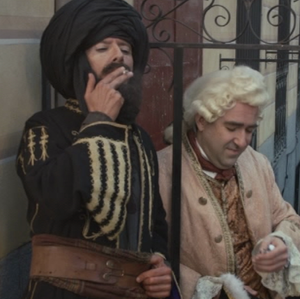
The Spanish Golden Age (1492-1700) has aspects that will appeal to any audience: the rise and decline of the Spanish Empire; the colonization of the New World; the union (and disunion) of the Iberian kingdoms; the persecution of Jews, Muslims, and Protestants; and the development of the first global economy. Moving between Quixotic post-modern craziness and Velázquez’s pictorial delusions, this period triggers tales of bravery and imperial greed, while also serving to reenact questions of religious and cultural hegemony as well as racial and national identity. Between nostalgic idealization and demonization, the way we imagine the Spanish Golden Age always reveals our own ideological coordinates: Whose Golden Age? What do we select from the Spanish Golden Age and why? What has already been selected for us? What kinds of continuities or discontinuities do we establish with the past? What can we learn by contrasting different representations?
This course explores how contemporary film representations of the Spanish Golden Age have been produced and consumed in Spain and beyond. Reel history either reflects nostalgia for a past of grandeur or rejects it as a burdensome legacy which is perceived as incompatible with modernity. But the early modern Spanish Empire can be used as well to intervene in contemporary debates, such as immigration, sexual and civil rights, or cultural identity. The course will focus mainly on film representations, complemented with the reading of theoretical, literary, journalistic, and tourist documents.
Students will learn to analyze cultural, visual, and literary representations of the past, and will also have the opportunity to learn the basics for creating presentations with audiovisual materials. The course will be in Spanish.
Thursdays, 5pm-7:50pm, G36 FLB.
Instructor: Javier Irigoyen-García